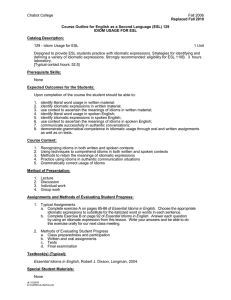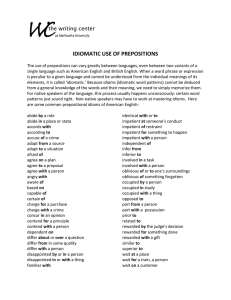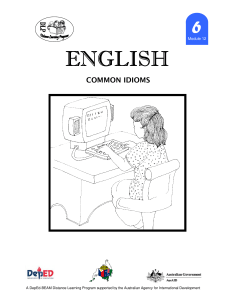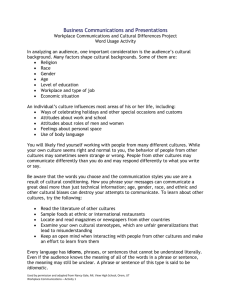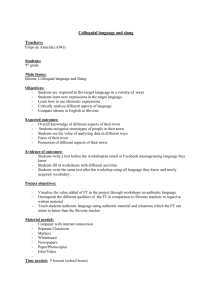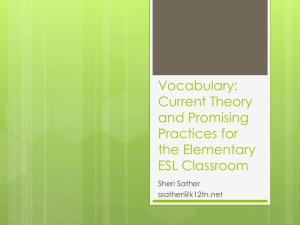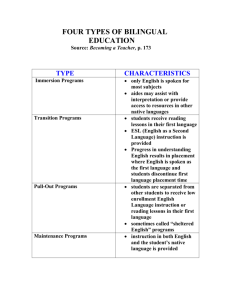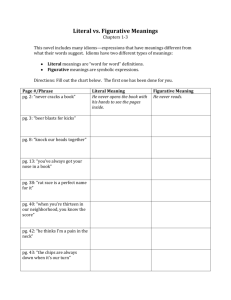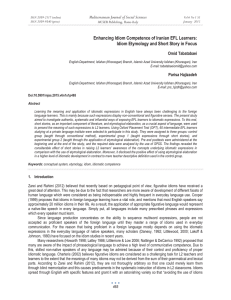129 – Vocabulary Usage for ESL: Idiomatic
advertisement
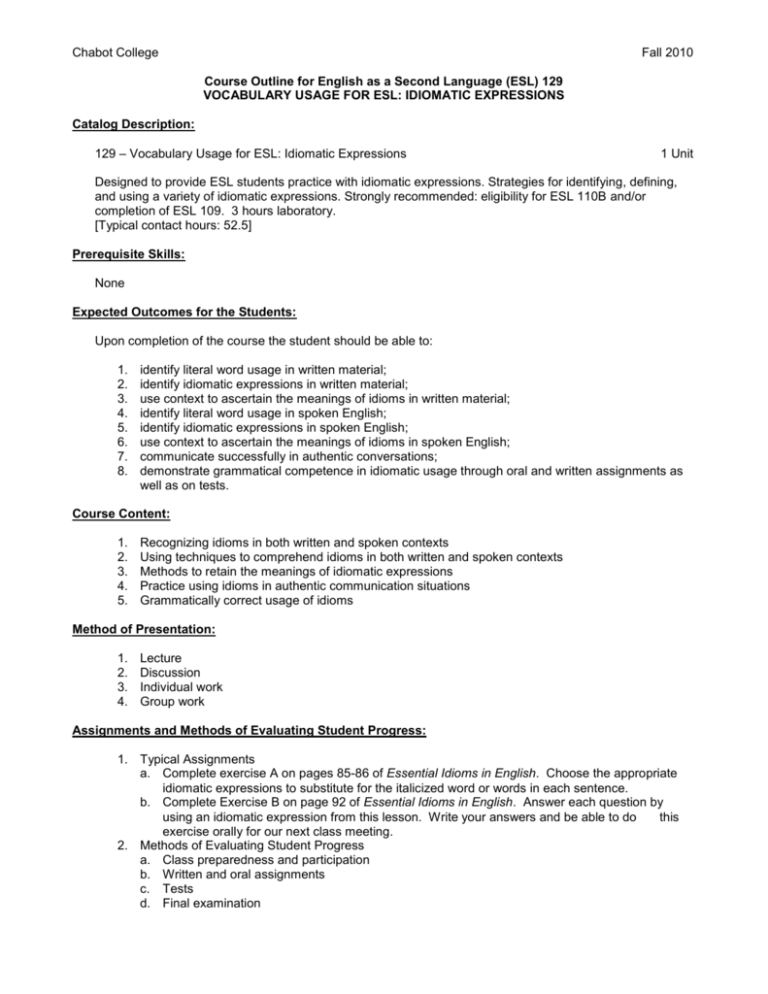
Chabot College Fall 2010 Course Outline for English as a Second Language (ESL) 129 VOCABULARY USAGE FOR ESL: IDIOMATIC EXPRESSIONS Catalog Description: 129 – Vocabulary Usage for ESL: Idiomatic Expressions 1 Unit Designed to provide ESL students practice with idiomatic expressions. Strategies for identifying, defining, and using a variety of idiomatic expressions. Strongly recommended: eligibility for ESL 110B and/or completion of ESL 109. 3 hours laboratory. [Typical contact hours: 52.5] Prerequisite Skills: None Expected Outcomes for the Students: Upon completion of the course the student should be able to: 1. 2. 3. 4. 5. 6. 7. 8. identify literal word usage in written material; identify idiomatic expressions in written material; use context to ascertain the meanings of idioms in written material; identify literal word usage in spoken English; identify idiomatic expressions in spoken English; use context to ascertain the meanings of idioms in spoken English; communicate successfully in authentic conversations; demonstrate grammatical competence in idiomatic usage through oral and written assignments as well as on tests. Course Content: 1. 2. 3. 4. 5. Recognizing idioms in both written and spoken contexts Using techniques to comprehend idioms in both written and spoken contexts Methods to retain the meanings of idiomatic expressions Practice using idioms in authentic communication situations Grammatically correct usage of idioms Method of Presentation: 1. 2. 3. 4. Lecture Discussion Individual work Group work Assignments and Methods of Evaluating Student Progress: 1. Typical Assignments a. Complete exercise A on pages 85-86 of Essential Idioms in English. Choose the appropriate idiomatic expressions to substitute for the italicized word or words in each sentence. b. Complete Exercise B on page 92 of Essential Idioms in English. Answer each question by using an idiomatic expression from this lesson. Write your answers and be able to do this exercise orally for our next class meeting. 2. Methods of Evaluating Student Progress a. Class preparedness and participation b. Written and oral assignments c. Tests d. Final examination Chabot College Course Outline for ESL 129, Page 2 Fall 2010 Textbook(s) (Typical): A Year in the Life of an ESL Student, Francis, Trafford Publishing, 2008. Essential Idioms in English, Robert J. Dixson, Longman, 2004.* Idioms for Everyday Use, Broukal, NTC, 1994.* *These are classics; there are no better substitutes. Special Student Materials: None dk 11/5/09 curriculum 0910
